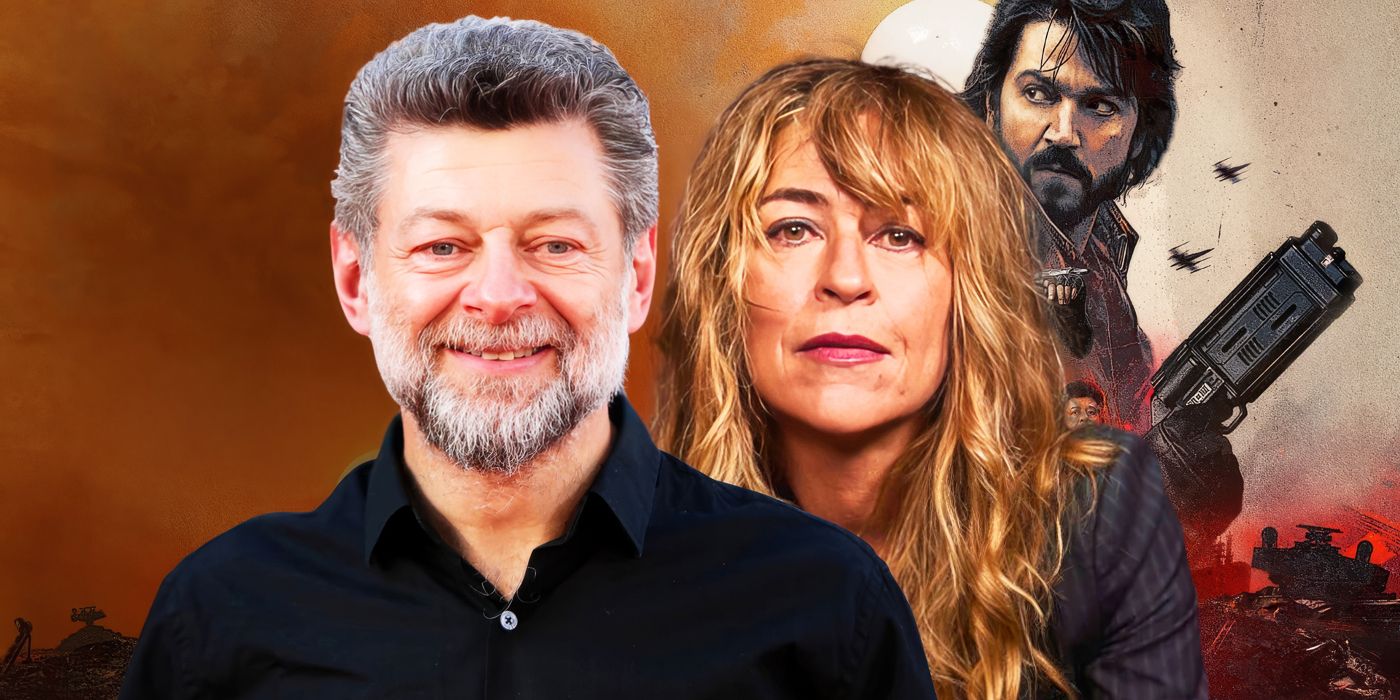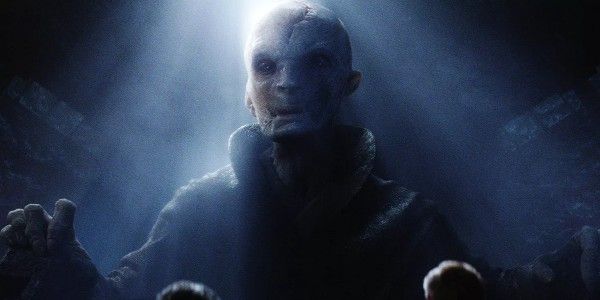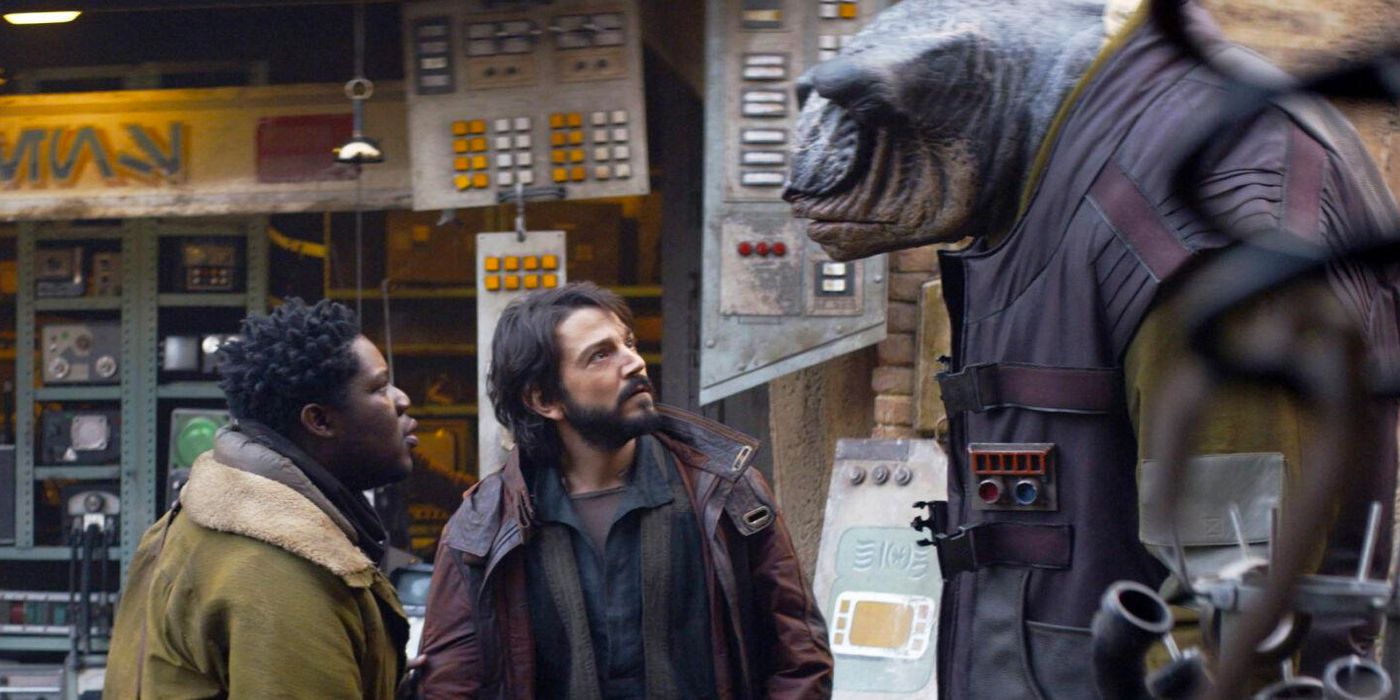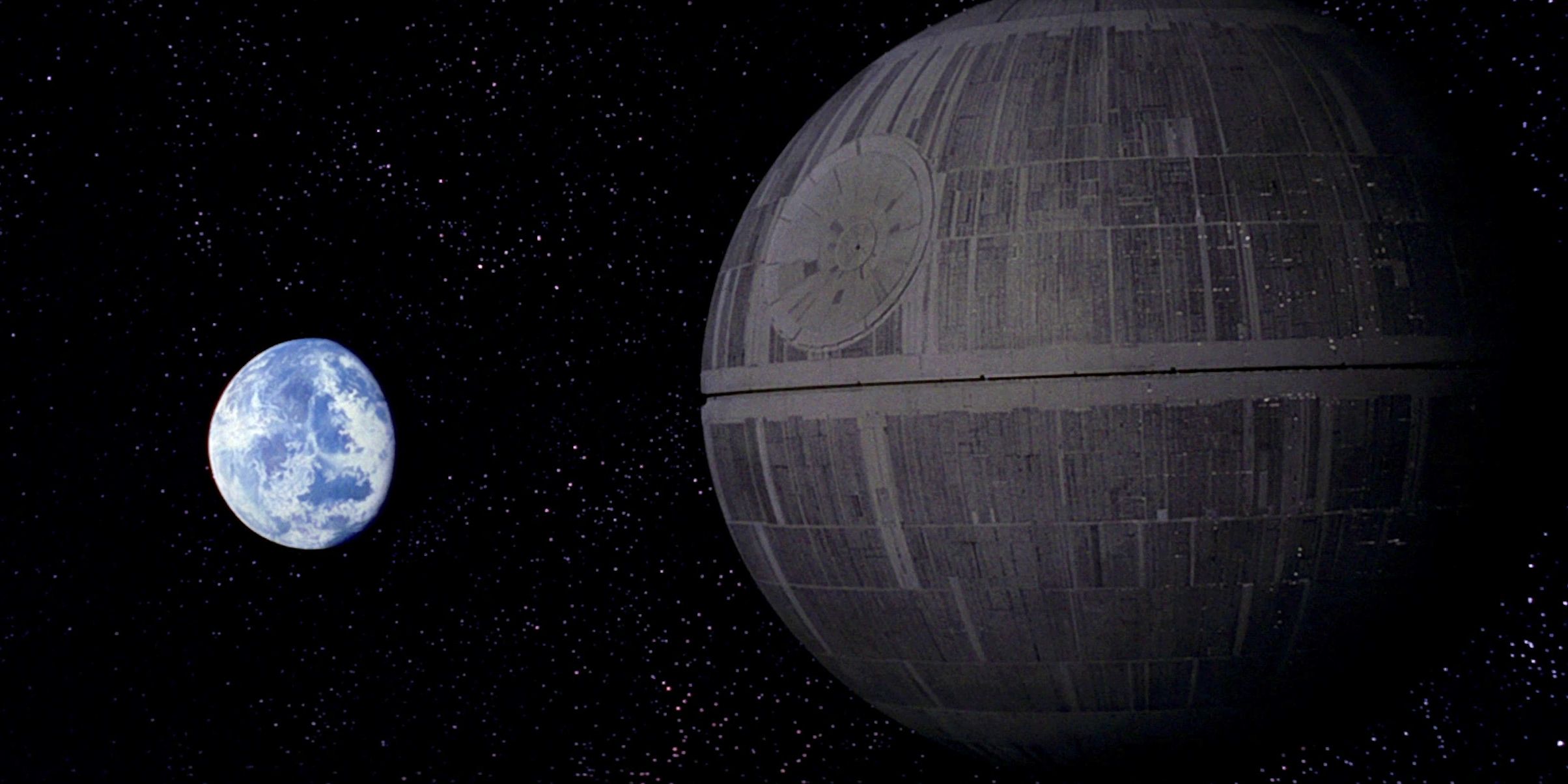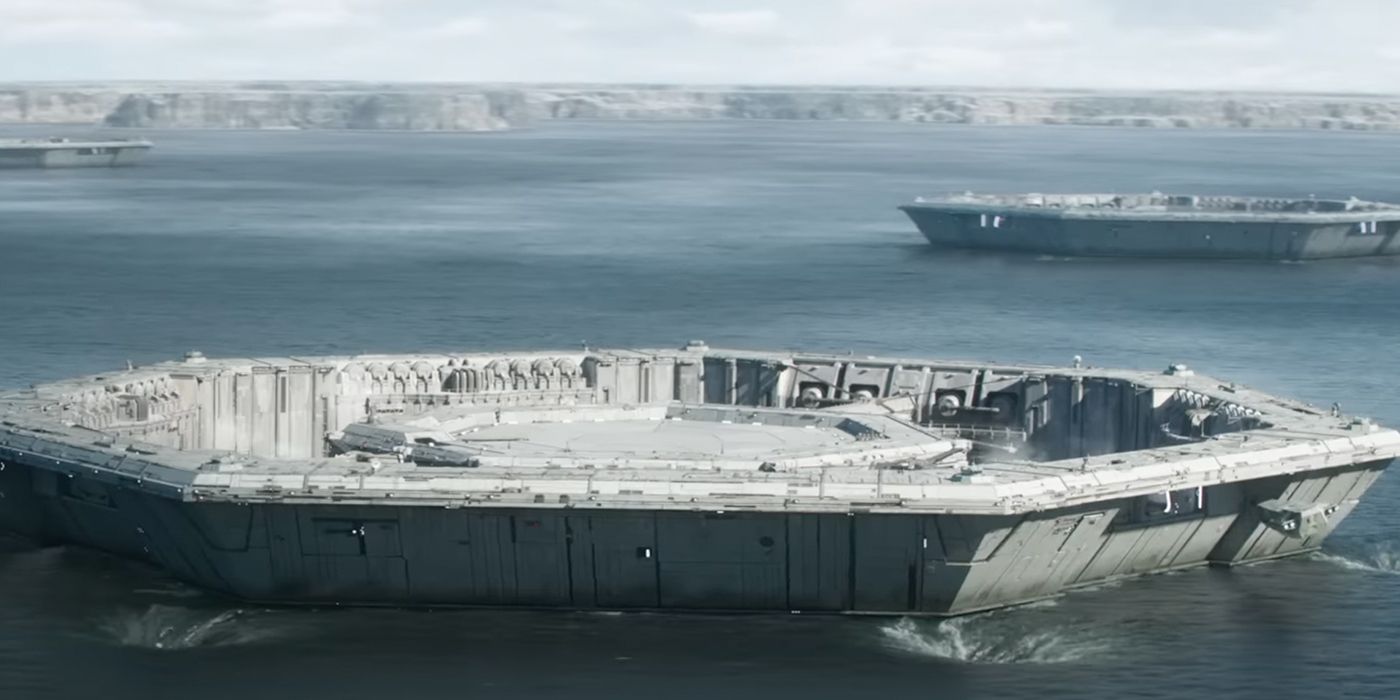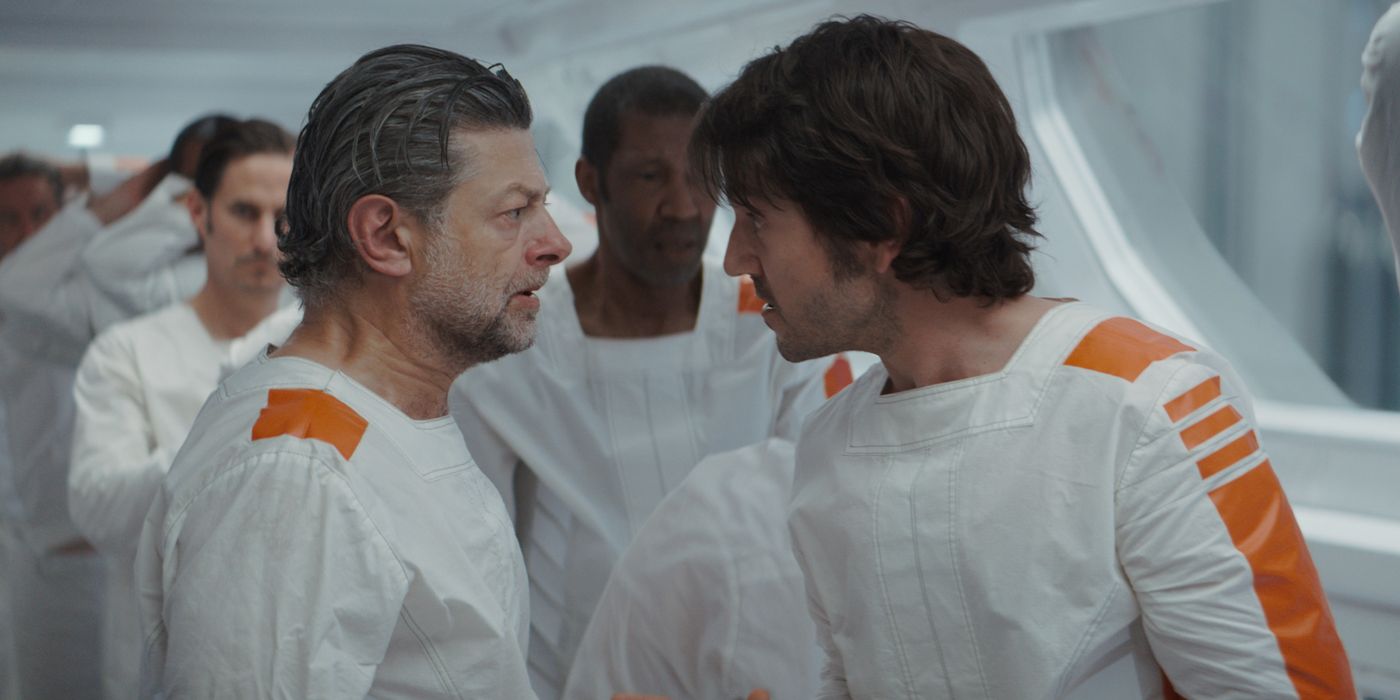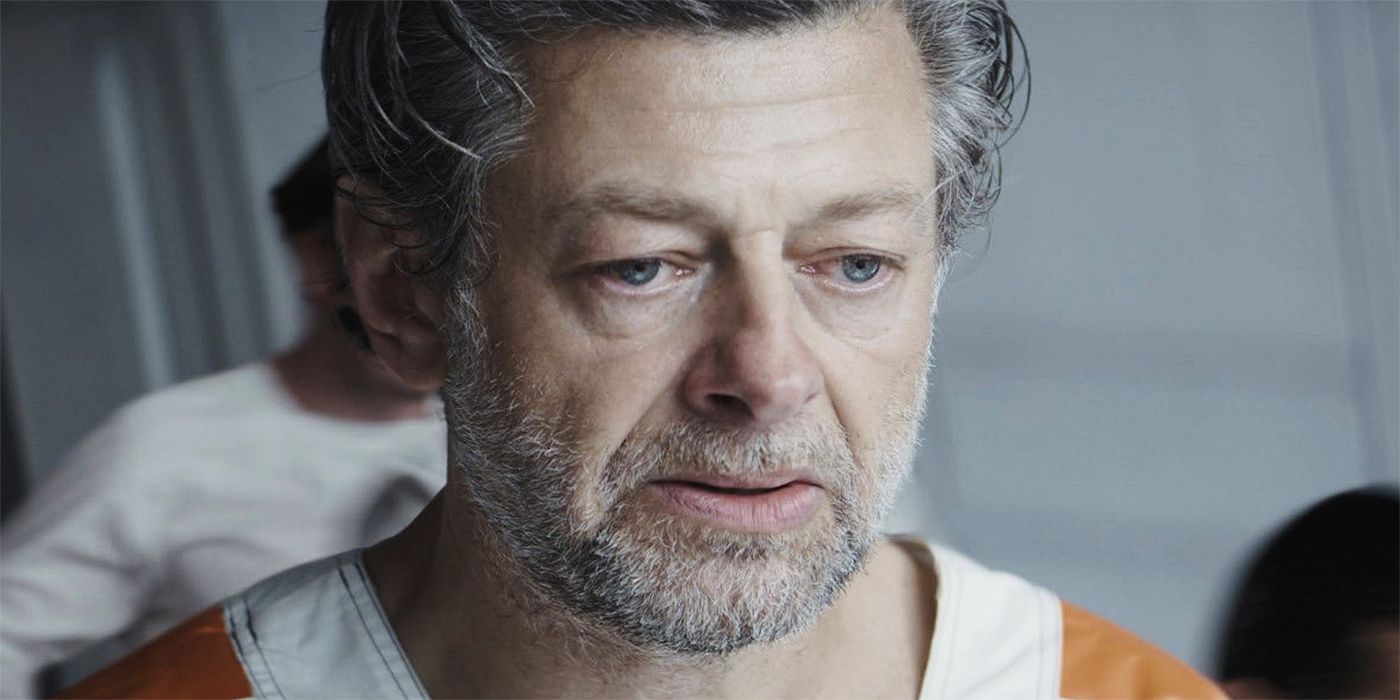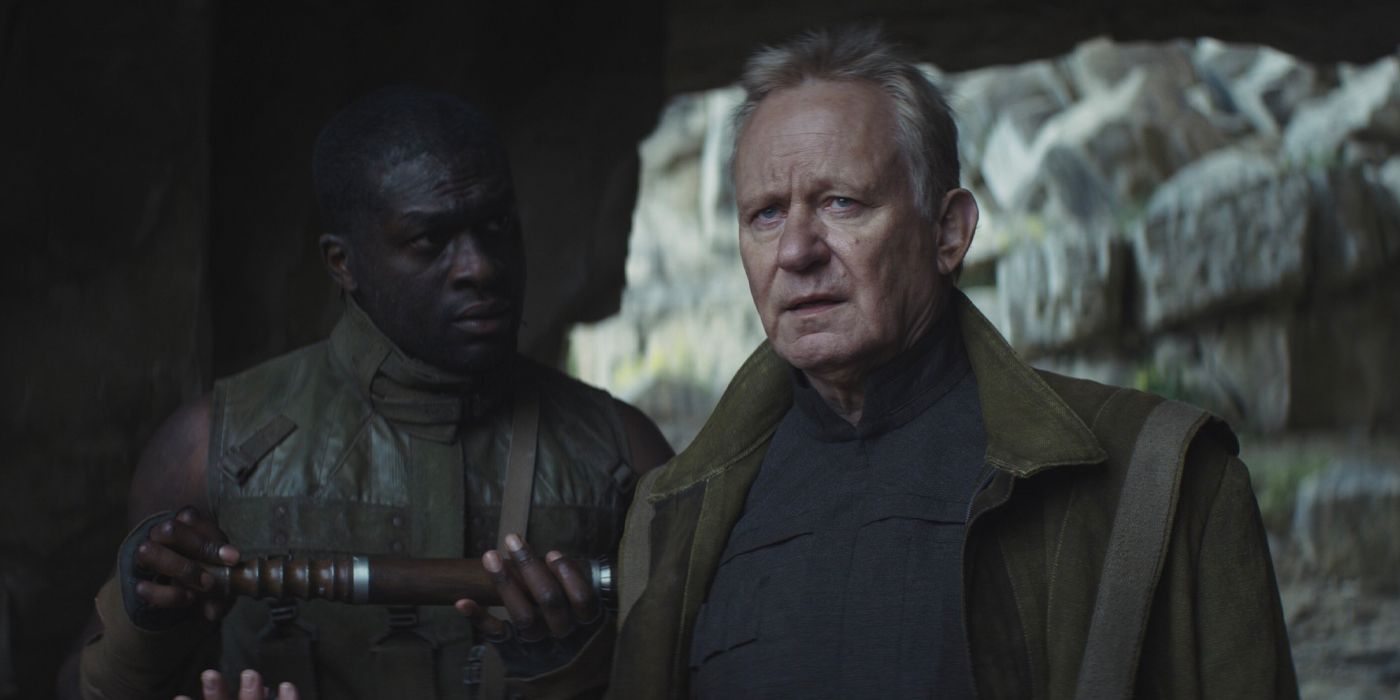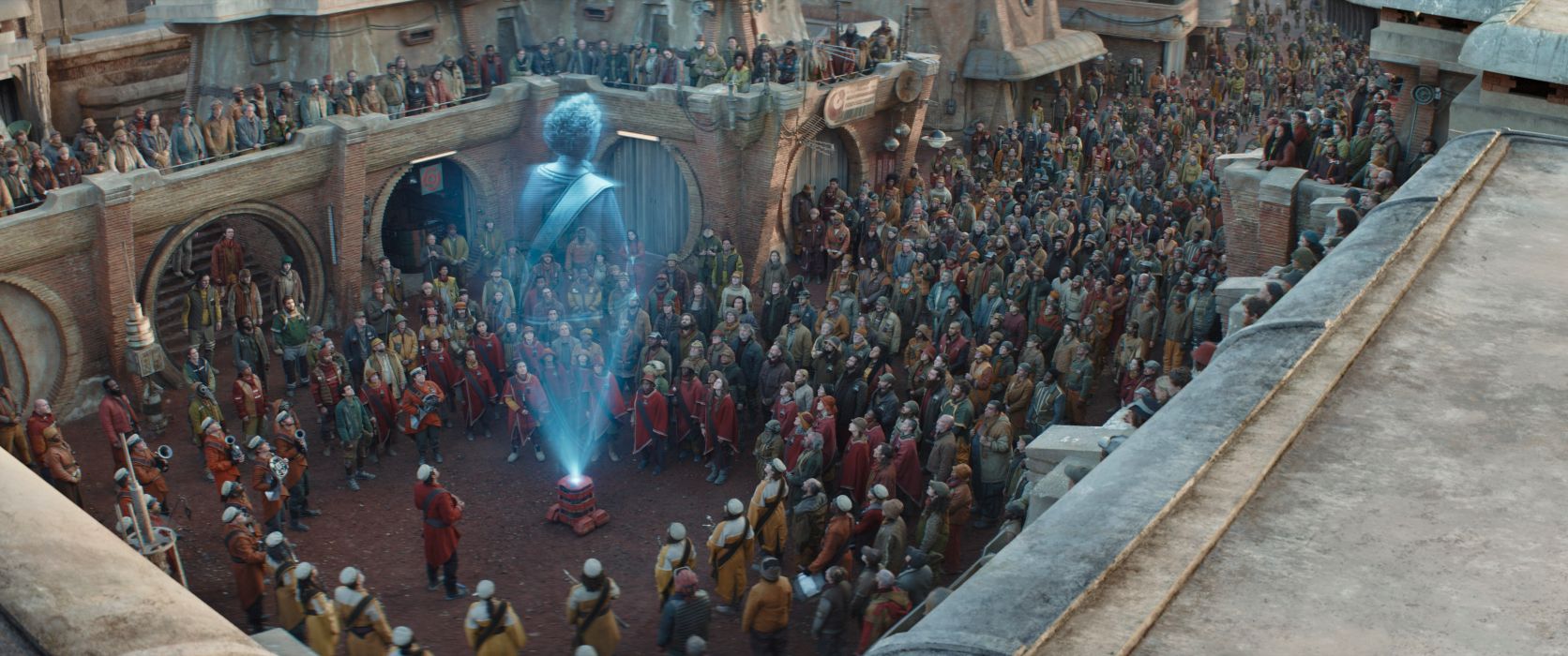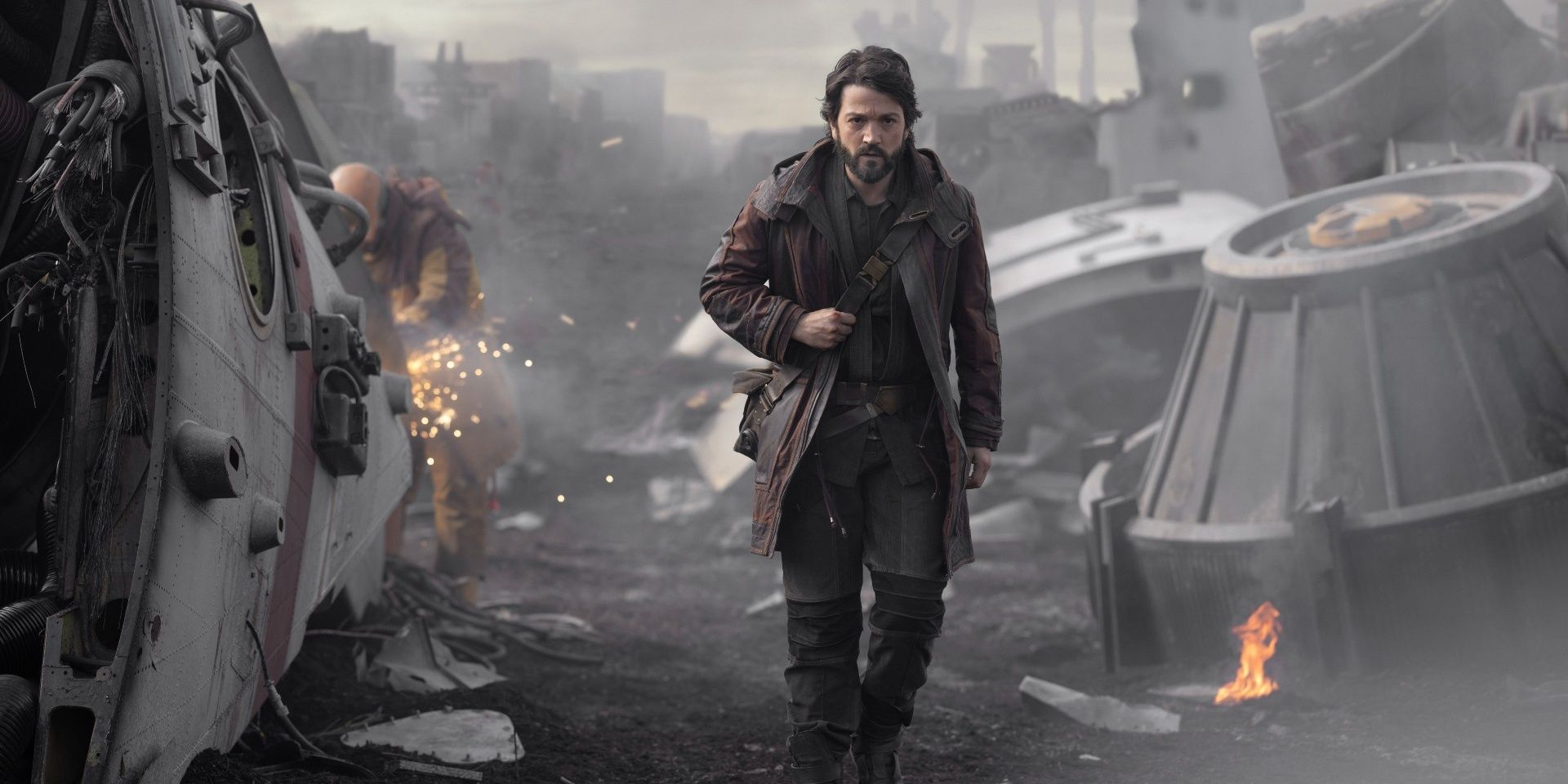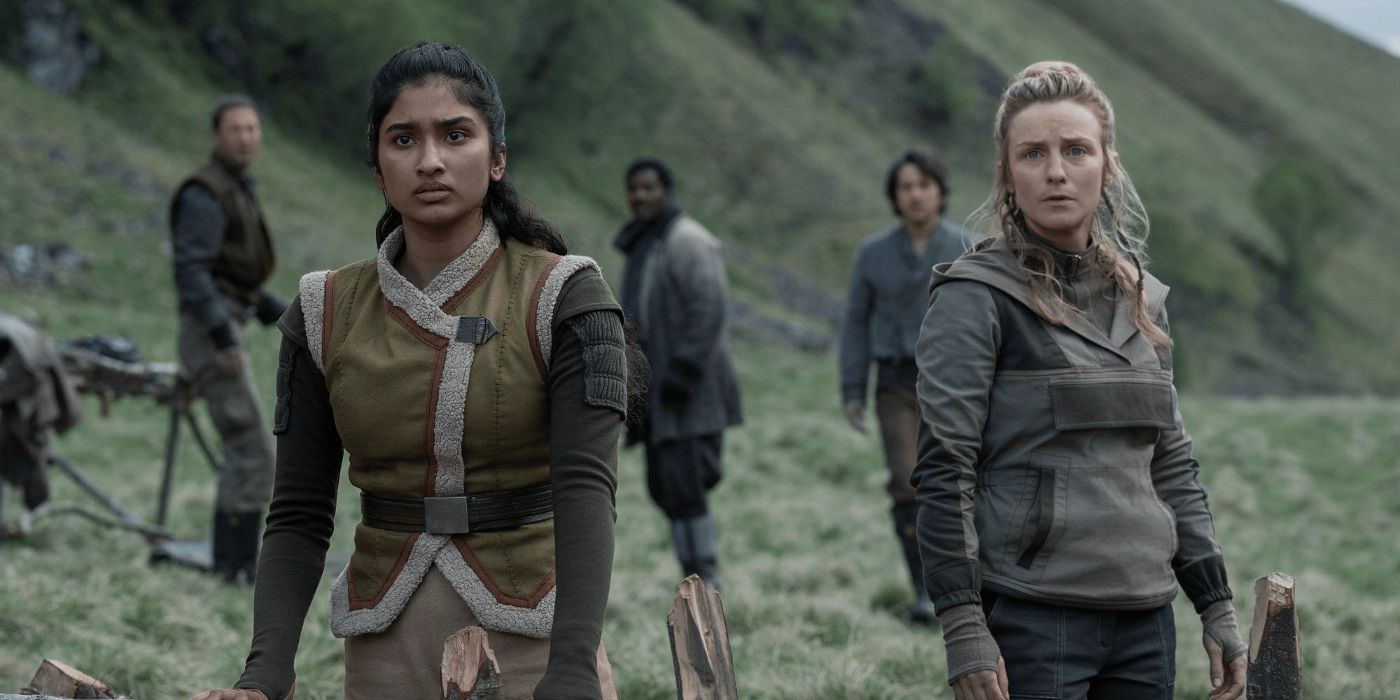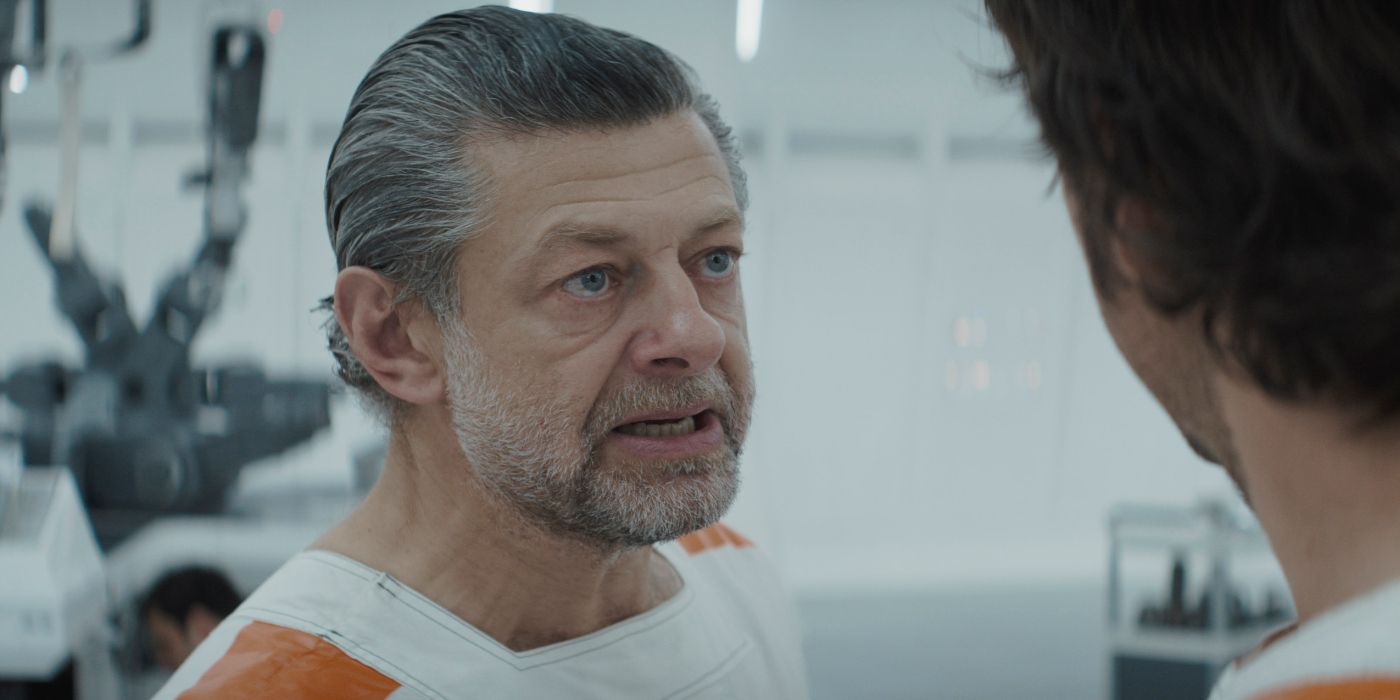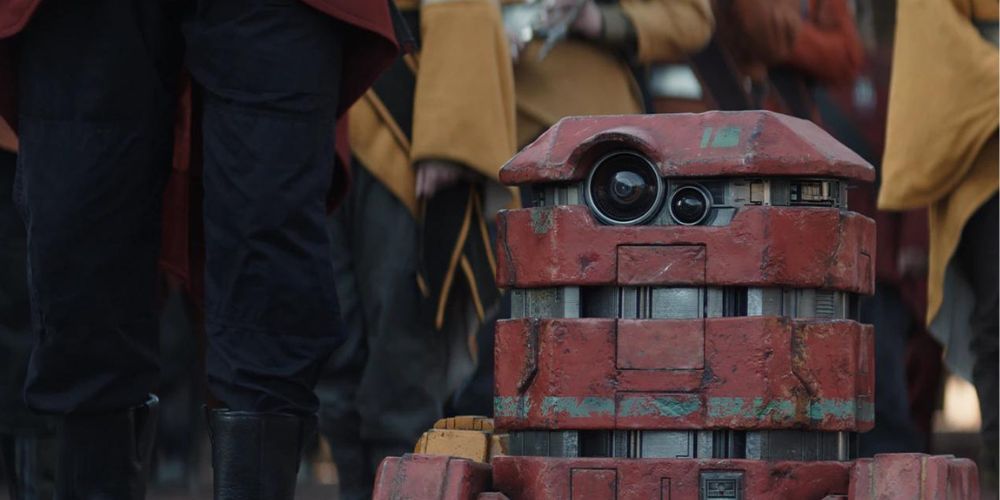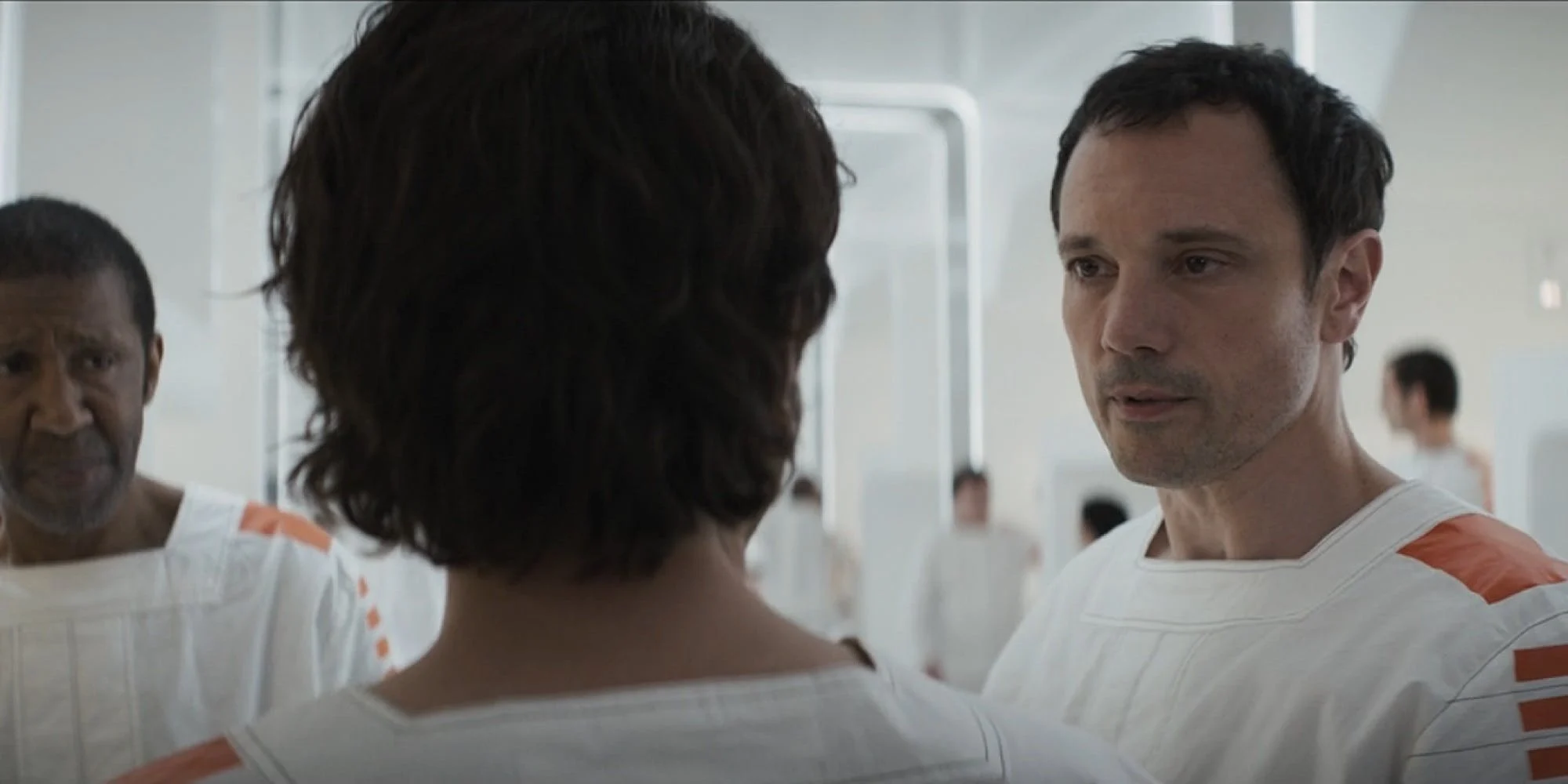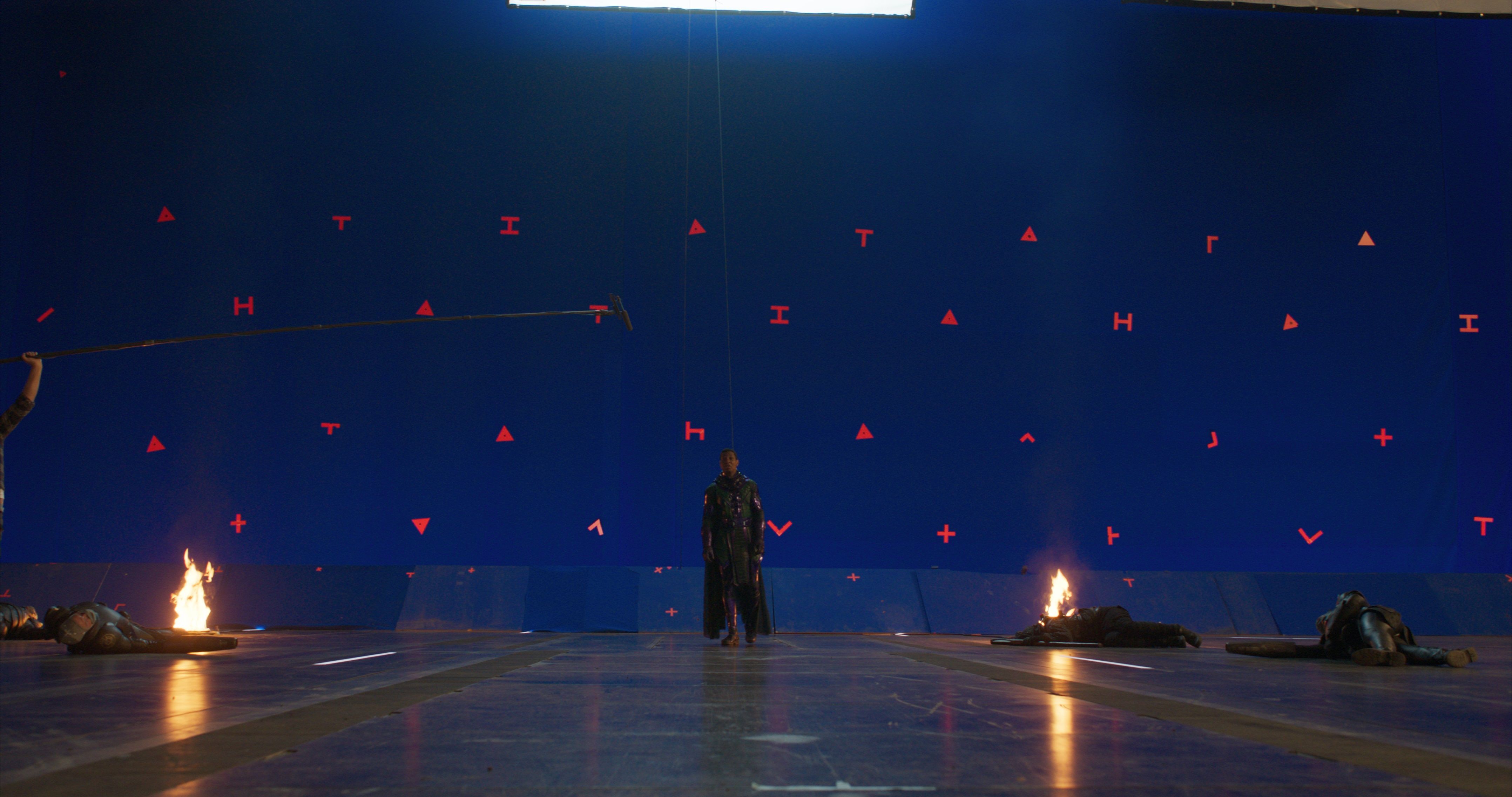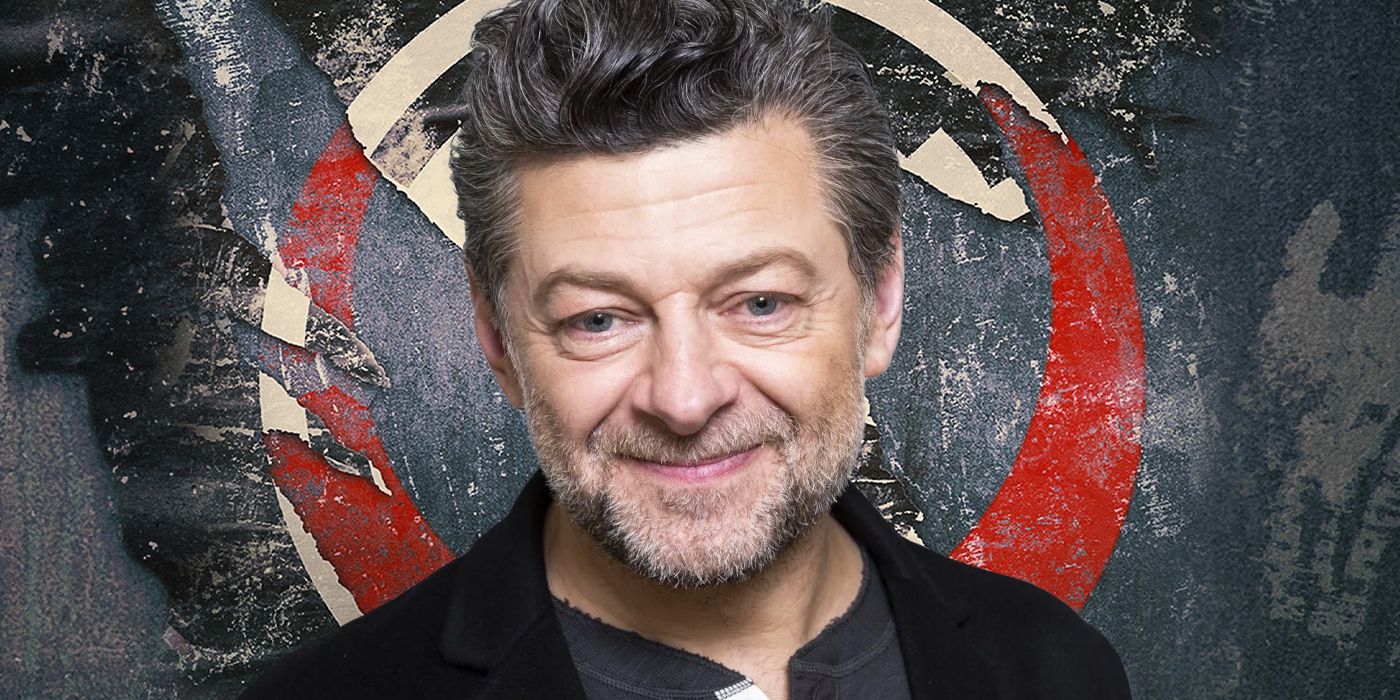A few weeks ago, we had the opportunity to host a very fun screening of Andor's Narkina 5 arc on the Disney Studios Lot. Following the screening, Collider's Steve Weintraub was joined by Andy Serkis and the series' executive producer Sanne Wohlenberg to discuss the trio of episodes and so much more. The episodes saw the titular character, Cassian Andor (Diego Luna) unfairly incarcerated in a brutal prison complex, where he crosses paths with the rule-following foreman Kino Loy (Serkis).
Serkis shared what his initial thoughts were when Tony Gilroy asked him to join the series, his concerns about fans attempting to draw connections between Kino Loy and Snoke, the backstory he developed for Kino, which he had previously shared with us, what it was like working on the Narkina 5 prison set, what it was like to see the fan reaction to his character, and why the series resonates so strongly with audiences. Wohlenberg also spoke about the fact that the Andor scripts are available to view online, the challenges the series faced in Season 1, and where they drew influences from for the prison set.
COLLIDER: What’s it like being part of what I feel, and I think a lot of people feel, is the best Star Wars since 1980?
SANNE WOHLENBERG: It feels rather great, really, when I hear you say that.
The show is incredible.
WOHLENBERG: Listen, I think [Tony Gilroy’s] vision and the team we collated and the story he is telling are just a huge passion for everybody involved, and a real inspiration. It is a real pleasure and joy to be part of this journey, and a gift to have found such an extraordinary response, [to the crowd] and loving your costumes! It's just a great journey.
ANDY SERKIS: And Sanne has dedicated five years of her life to this project and done the most incredible job.
Andy’s Journey From the Dark Side
Andy, people love your character on this series. When did you realize that this was going to be something special?
SERKIS: Oh, pretty much when I first talked to Tony about getting involved in it. I mean, he was so passionate about it. I was such a massive fan of Rogue One, it was such a great film, and, you know, having had the opportunity to have seen Star Wars from a particular perspective on the dark side, and then– Actually, when I was approached, I was quite trepidacious because I was thinking, there were so many Snoke theories over the years that I'd had to duck and dive and avoid, and then I just thought, “Oh no, this is gonna be a nightmare because people are gonna think Kino Loy is somehow associated with Snoke, and I'm gonna have to talk around the houses.” But then, when he explained to me what he was doing and the character– and of course, with every single character in Andor there is such depth and humanity, and they are flawed, and the way that Cassian (Diego Luna) weaves his way through this incredible heroic journey through kind of experiencing all of these extraordinary characters.
But the way Tony explained the arc that I was going to be involved in, you know, I just instantly had an enormous respect for – I mean, I've always respected him as a writer-director, but just his integrity in terms of being authentic and knowing what he wants to say, and to use this platform, and to use this world and universe to say such important things about the human condition. To me, it really just took me in, and it's exactly the sort of filmmaking or storytelling that I like to be involved in.
Realizing the World of ‘Andor’
You forget that this is a TV show because the production design, the writing, every aspect of this series is just on another level. So can you both talk a little bit about what it’s like on set seeing what these brilliant crew people are bringing to life and obviously the incredible writing?
WOHLENBERG: I think the whole process of how we can realize it and bring Tony's vision to the screen really started in the writers' room where our production designers are already part of it at even, you know, the early, early stages. And for the many challenges to also kind of feed through, right from the start, what may be possible, what isn't, what solutions we could find in order to bring that vision to the screen. It's a whole lot of conversations, and you know, many, many meetings and details to be discussed about the truthfulness.
If you're creating a Star Wars prison, what does it look like? How can you be fresh? It's kind of a real challenge to embark on anything. It was prison. There have been so many iterations and amazing stories to be told, and yet when Tony realized that he needed Cassian to be locked up, it was a real challenge right from the start to think, how do we go about it? How can we be fresh? And it was little things that started off. We didn't want it to be dark and dingy, and we thought, “Well, if it's a Star Wars facility, it should be shiny and clean and the very opposite,” and then we came to, “Maybe there are no bars anywhere, maybe you don't need staff.” It was just an extraordinary whirlwind with Tony and Dan [Gilroy] and Beau [Willimon] in a room, and to really kind of riff, “What is the basis?” And he came to an electric floor. And the whole story and reality of how it works and what it does, that also enables Tony to write how you could stage a rebellion within, and how Cassian finding himself locked up there could have seen enough to begin to get the kernals of getting out of there.
How do you facilitate communication? Prisons always have communications, and yet, how difficult is it when you find yourself in a world where you [are] super regimented, can't mingle, and you know, and all these many, many discussions and thoughts kind of led us to what it came to. Then you also know what you have to build and, look, you never have enough money to do anything you want to do, and and yet you have to find a way. And so, you would be probably surprised how little we built in the end, and how we cleverly used and reused, and what we had in order to create a world that is ultimately huge. And, of course, CG extensions, you know, help us a lot [laughs], but, you know, also have to be at a minimum. So yeah, it was quite an extraordinary journey. And Michael Wilkinson creating the costumes. What does a Star Wars prison uniform look like? Prison couture was not something he imagined he would be good at. So it has been an extraordinary, complex… journey, and God, I'm thrilled that I think we got there and got it right.
Building the Death Star
Oh yeah. Andy, I'm curious, did they tell you when you were filming what you guys were building, or did you did they leave that alone and say, “Just watch the show?”
SERKIS: I actually worked it out because my son had the Death Star LEGO [laughs] and I saw the pieces, and I thought, “Oh, right! Okay, I get it!”
WOHLENBERG: We didn’t tell them. Nobody was told.
So you had no idea until you actually put it together on your own? Did it get spread like a rumor?
SERKIS: Yeah, it was all hand signaled over to, we started talking to each other, you know, we started communicating with each other, “What do you think is being made?” You know, “I haven't got a clue!” [Laughs]
Nowhere to Hide on Narkina 5
A lot of this audience knows how the sausage is made, and I'm curious for both of you, what do you think might surprise Andor fans to learn about the actual making of Andor?
WOHLENBERG: Oh, that is a loaded question, I don't know.
SERKIS: Well, I have to say, just talking about going to the prison… So obviously there were a lot of supporting artists in the prison setup, and there was nowhere to hide on that set. It's really extraordinary – because you're talking about prisons, you think of them as dark, dingy places and so on and so forth. This was wide open, bright white glaring lights, metal underneath your feet, wearing paper–
WOHLENBERG: No shoes.
SERKIS: –no shoes, paper uniform. And that was the strange thing was, finding your sliders after every single scene, 50 people trying to find their own pairs of sliders to get back in, to walk back to, you know?
WOHLENBERG: Sometimes 100.
SERKIS: Yeah, exactly.
WOHLENBERG: I also I think one thing that is probably hard to imagine, even now, are those wonderful tunnels and corridors that were connecting where the sleeping pods are on the factory floor. It was just a very long set, elevated, and you had to close the doors at both ends. And when we were filming in there, there were 100 people, plus crew, in it at a time where we are wearing masks, and COVID was very much amongst us, and it felt slightly counterintuitive. But you'd be pleased that nothing ever happened to us.
SERKIS: That was remarkable. It was extraordinary, actually, like you say. I mean, those were literally like COVID test tubes that we were kind of living in for, all together in very close proximity. There was nowhere to hide. That was the thing. Those sets did something so strange to your heads because normally when you're filming, you find a little place to go and sit, and you've got your own stash of stuff, whatever, you've got your bits and pieces. But, it just wasn't like that on this set. It was so desensitizing, and just being barefooted all the time, and those uniforms, it did all help for the drama, but God, it mucked youre head around. It really, really got inside you.
WOHLENBERG: And I think nobody would have any idea how many conversations we had about the lift taking you down from the intake down to the floor. I think more than 50, and so many people involved, and the mechanics of it and what it had to deliver, and what it had to achieve, and yes, it had to be practical, and effects. A lot of thought went into it, and all worth it because when we came to film it, crazy days as there were – [to Serkis] I love the moment when you start charging. It was really quite profound – it really came together. It was a very fond memories of that time.
Will Kino Loy Return for Season 2?
I still don't understand how you guys did it because basically every three episodes was like a new pilot. I just can only say thank you so many times because it's so incredible. But I want to ask you – and you've answered this, I know, at least 50 times maybe 100, but obviously we never see Kino die. Now you've spent a decent amount of time with Tony, have you guys actually had any conversations about the what ifs, what could be, and have you been filming anything on Season 2?
SERKIS: [Laughs] Well now, that would be telling. But, you know, there is a scene of Kino on his own, practicing the crawl, and the breast stroke, in his cell imagining how he can– No, I have no idea what's going on. I have no idea, no idea, no idea. No, not at all.
“I Can’t Swim.”
It's such a beautiful scene, watching when he says, “I can't swim,” and obviously it's the culmination of everything. So talk a little bit about filming that scene, delivering that line, and were there alt versions where you were saying it differently? Talk a little bit about it, if you don't mind.
SERKIS: That scene actually was the very, very last day of the shoot, of the whole thing, of the whole of the season.
WOHLENBERG: Yeah, we wrapped after that.
SERKIS: We literally wrapped. Literally, people were diving, jumping off, and then it was just like, “And, that's it! Wrap! Everybody go home.” So it was a big day anyway, but what was great was, Toby Haynes, the director, who did such an incredible job of this arc and these episodes, he really was interested in nuance of performance. I did that scene many, many different ways just in trying to explore what it is like to– Look, he was a character that had sort of kind of lost himself. I always imagined that he was, prior to being incarcerated, someone who had great heart, who was, in fact, probably someone who would have stood up for his fellow workers, would have been a shop steward or a union rep who is strong, a firebrand, passionate, cared about other people. And then completely, once he was incarcerated – probably because he was very good at galvanizing people, and the Empire would have been threatened by someone like that – once he's incarcerated, completely loses his, you know– he just wants to get through his sentence and get out, and actually becomes very, very hard and bitter, and just doesn't want to make any ripples, just get through the situation.
When, of course, Cassian arrives and the whole story unfolds, and the reality is that no one's going to get out, then it's reignited, this whole thing of once again being able to care for your fellow inmates, and actually really sort of reconnect with a version of yourself that you'd never thought you'd find again. So, we went through all of that, and then the day comes where you get to – and I knew this, obviously, I knew what was gonna happen, but there are so many different ways of playing that moment. We explored a kind of, you know, an anger, we explored a kind of resignation, we explored a kind of gallows humor. We tried lots of different variations. The one that Toby finally put in the cut, and is the one that you saw, was one of acceptance and I was actually really glad that that was the version that made it because, again, it was sort of like this, the, it, it was a perfect end to the journey of that character, that acceptance.
The night before you're filming something like that, are you practicing those lines at home? Are you in your head about it, and how much are you sort of thinking about it in the moment, right before you're walking to set?
SERKIS: Well, obviously lots of actors approach things in different ways, and everybody has their own process. The build-up to the escape, and the speech that he makes, the “one way out,” that was very nerve-wracking because those speeches can go horribly, horribly wrong if you're not in the moment and you're actually feeling it. If you overthink things and you prescribe things too much, you can really come across as– if it's too premeditated because you've worked hard on it, you've got to know it so well that you can throw it away and be in the moment, and that's the thing. As an actor, I think, you do a lot of preparation, you do a lot of backstory-building, you do a lot of kind of working out who this person is, physicality, voice, all that kind of stuff, and then you kind of have to throw it away and trust the moment because the great things happen in the moment, and the things that you're not prepared for, and you have to be open to that.
So, I mean, I was really, really scared the day that I had to do the big speech, and actually, so was Kino Loy, so it sort of worked out. So when Cassian says, “Is that all you got?” every time we did that, I was just like, “I hope I can get through this.” And so, it felt very real and present, and in the moment because it was [laughs]. Kino finding his mojo again was a genuine sort of thing. You don't know, as an actor, you don't know whether you're going to do it. You don't know whether you're going to deliver. You hope you're going to deliver, but there's no guarantee, and sometimes you don't, so it's always scary.
There are a few monologues in Andor that are unbelievable, and in Episode 10 there's the Stellan [Skarsgård] monologue. Is it the writer, Beau, who's writing the episode and that thing? Talk a little bit of how these things come together in preproduction.
WOHLENBERG: It really was a writing thing, and Tony's show generally, and I think he doesn't shy away from it, Beau doesn't shy away from it, and his writing partners don't. You know, speeches are sometimes something that is really poignant and right, and I think it's a most extraordinary piece of writing for Stellan’s speech, and the most truthful and important thing for his character at that moment to learn the truth. And to hear him give things away when he is, ultimately, the puppeteer who very cleverly pulls the strings behind closed doors, and you actually know very little about him initially, just that he has two personalities, and a very good cover story he lives that aids his course. And I think picking that moment to give him such a profound speech that is so human and so deep, I mean, it was electric to film it. It was, I'm sure, scary for Stellan, too, to prepare for it, but also, you know, I just know what joy he felt when he read it, and how thrilled he was to be given something that is such an extraordinary opportunity for an extraordinary performance.
It's just really lovely that Andor, the show, makes that possible, what a lot of other shows shy away from. You think about Maarva (Fiona Shaw) and her eulogy. It really gives characters a chance to very truthfully and kind of naturally come to a place where they have something rather profound to give a weight to.
Obviously these people dressed up in the prison outfit. Did you take your prison outfit home, or were you like, “I'm burning this the second we wrap?”
SERKIS: No, I use them as my pajamas now. [Laughs] No, I didn't take my costume home because you wouldn't have wanted to go anywhere near our costumes by the end of the shoot. I have to tell you, they were not in… you could smell people a mile off. It was not good.
Why Does Andor Resonate?
You were at Star Wars Celebration, and I saw there were so many people cosplaying in costume. What is it like being a part of something that strikes such a nerve with so many people that they want to be a part of it?
SERKIS: I first sort of got wind that this was going to be a thing in Tokyo, at the Tokyo Comic-Con actually, just before Christmas. I was meeting lots of people, and then suddenly people were coming up dressed as – [to audience member] you are magnificently – and wanting to go on program, and wanting to chant “One way out!” And it was like, “What the–? Has someone told you about this?”
And I kind of have thought about this, and it's like, you know, we're living in a world now where there's so much censorship, where there is so much oppression, and people feel squashed in so many ways, not just politically squashed, but ideologically and culturally. People feel really– through coming out of COVID, through all the stuff that's going on in the world at the moment, you know, people feel oppressed, I think. And Tony's a great allegorical writer, he's not writing for right now, because as he would say, if he was writing this 100 years ago, he'd be writing the same thing. It's not just about the world that we live in today, there's a universal truth in how he writes. We were talking yesterday about this, he was writing an antifascist piece. That's what this is about. And I think that the kind of the release of that is what people are tapping into and enjoying, and finding the excitement and energy from.
Do you think we're going to get an Andor behind-the-scenes doc for Season 1 on Disney+?
WOHLENBERG: I really don't know, but let me find out.
I'd really love it if you would pass up the food chain that a lot of people would like to watch whatever you want to do.
WOHLENBERG: I shall pass on the message, absolutely.
Full Andor Scripts Are Available Online
Actually, we should mention, and I'm not sure how many of you heard, but they're going to be releasing the scripts online for people to read, in the middle of the month, I think.
WOHLENBERG: Yes, Tony announced that yesterday. The final scripts will be released online together with some concept art to really combine that information. And I know the URL wasn't up yet, and Tony couldn't remember, but yes, it is happening and I believe it is imminent. I think anybody who is a fan, I think reading Tony's words, and to see what the basis was of what we we created will be a really exciting journey. I'm very thrilled that that’s happening.
There's always people behind the scenes that don't get enough credit in the creation of something like this. So for each of you, who is an unsung hero that you want to shine a light on that really helped you with Andor?
WOHLENBERG: For me, there are so many. You know, when you're producing anything without your production team– I know I could name them all now, the producers that work alongside me and the entire team, but I think it is also really our entire crew. We have a very large team of very dedicated and very talented people that are hugely inspired by Tony's and our vision, and the show that we are doing. Filmmaking is a team effort, filmmaking, it's all about a whole bunch of people coming together and bringing something that kind of often exceeds Tony's expectations, and just creating something very magic. And it is the entire team. We are blessed with our Pilgrim family, and I love them all and thank them forever, and without them, none of us would be shining and sitting here, and you wouldn't be enjoying the show that I'm so thrilled you are enjoying.
Is there someone you want to shine a light on?
SERKIS: I just echo everything Sanne was saying. It is an immense team effort. When you're on a show, when you feel the energy of the crew behind you all the time, kind of there for you every single moment, it's because they are transported by the material and the passion of the filmmakers, and so on and so forth. But everyone collectively feels that energy, and so, I mean, I can't single anyone out in particular because it's a massive organism that thrives on everybody bringing 150% every day to make something work. And that energy, when it's on a show – and you do feel it when you're on a show that feels special – it comes from the authenticity of the storytelling. That's where it comes from because you feel like you're making something that actually is important, and to be able to speak about important things in a Star Wars universe is, it's just joy. It doesn't get any better that you can actually communicate important ideas in a genre which, you know, many people who don't get it and don't understand it would ridicule.
But actually, we're all part of– you know, you're contracted to it with the actors, the producers. But the crew, they're the engine room of the whole thing. I think it is about you knowing that you're saying something that has real value that people are gonna love.
WOHLENBERG: But as we are shining the light on the crew, I really also have to say we had the most extraordinary ensemble cast. I mean, we had 175, or 79, speaking parts. We had huge numbers of crowd, and every single Ferrixian in the end, after a very long journey, you know, when the riot came, they were fighting as Ferrixians for their survival. It is an extraordinary journey, and every person that stepped in front of the camera really was just a joy. Only when that all comes together, again, like with a team when you're making it and preparing it in order to turn it over, it is every single element has to work together to be able to create something that feels real and authentic. And it's something that you can dive into and immerse yourself into, and enjoy.
As a producer, I'm so curious, this show seemed like it was endless challenges. There was nothing easy about the making of Andor, so what do you think was like level 10 out of 10 in terms of trying to pull it off with your budget and schedule?
WOHLENBERG: God, is there anything that isn’t level 10 or beyond? I think COVID, of course, added the extra dimension. We had to stop 11 weeks out from filming and, like everybody else in the world, fight to come back out of the door because not so easy when you are a big show with a lot of people involved and a huge cast, and huge crowds. And to find a safe way, that was an added little conundrum. But I don't know, by that time it became a reason that we kind of felt we had to do this, come what may, and we shall prevail, and that spirit was also a real joy. I think that added, you know, an extra bonus.
But yes, there's nothing easy about shows that have this scale. And when you produce for the small screen, you always have to cut out all the waste and have extra focus, and achieve more within a day in order to bring these values to screen. It is a daily challenge, but also an exciting one, and I don't know, it’s something that we chose to do, and I'm glad I did every day.
Yeah, I really don't know how you do it. I really don't know.
WOHLENBERG: I will one day go into therapy and try to work that through [laughs].
Andy Serkis’ Kino Loy Headcanon
AUDIENCE QUESTION: Hey, Andy, I feel like all of us, in our headcanon – it's what we make up because we love your character so much, “One way out!” – Steve, I think, tried to ask you about the fate of your character, but in your own headcanon, the story that you've made up, what happened to him? Did he jump off? Did he get pushed off? Did he realize he actually knew how to swim? What happened, Andy? Tell us in your head, please.
SERKIS: In my mind, I always have this picture of him sitting in his cell, very quietly, trying to practice swim strokes [laughs]. No, I really am joking. But look, he would have found the other survivors, and other people that weren't able to make it out because, of course, there are also a lot of injured people, a lot of people who weren't able to make the jump. So I think he would have stayed and he would have galvanized them. He would have brought them together. They would have found a way of surviving until– You know, now that they realized that there weren't that many guards overseeing them, the power shift would have been there. He would have been able to at least create some kind of semblance of a society, or a small society, however many survivors there were, until help was coming. So, I think that's probably where he would have gone.
I just have to ask, when you were filming this show, did you have any idea how many people were going to be asking, like begging, for this character to survive?
SERKIS: No, not at all. But I tell you what, some of the Comic-Cons I've been to [laughs], there's been amazing t-shirts with Kino Loy Swimming Society, you know, it's all manner of memes of Kino with a life preserver around his waist. You know, it's quite incredible how that has touched people. I mean, what, are you all afraid of swimming, or something? I mean, it's incredible.
AUDIENCE QUESTION: I'm curious what you imagined the precursor to your story was. How did you end up in prison, and how did you get into character when you ended up going on set each day?
SERKIS: I think I mentioned earlier, the idea that this was a guy who was quite a political figure, who was very strong-willed, had a family and was a family man, but also would go out on strike, or would stand up for fellow workers’ rights. And the very fact that he is a firebrand, and he is able to mobilize people and inspire people to do the right thing, you know, would have seemed a threat to the Empire, which is kind of in my mind.
And actually, I based him very closely on my brother-in-law, who sadly has passed, who was that person who actually was a very, very ardent, kind of socialist, and was often on political kind of– you know, he was often on strikes, and was adamant about work equality and workers’ rights. And I think that, for me, I wanted him to have that integrity, really, and then have that stripped away from him, only to be able to find it again.
Influences Behind a Star Wars Prison
AUDIENCE QUESTION: You mentioned earlier that you had to do a prison spin on Star Wars, and I'm just curious if there's any movies or entertainment that you watched, like Shawshank Redemption, you know, Escape from Alcatraz, that brought any sort of inspiration to how the characters would deal with the situation?
WOHLENBERG: There are so many really quite profound prison movies that one has seen, and they all give you a lot of food for thought, and have given all kinds of wonderful depictions of inmates within, and the situations, and a lot of political and difficult situations. So I think all of that makes you think, and all of that emotional truth that will exist within a facility where a whole lot of people find themselves locked up were certainly important to embrace, and Tony’s storytelling would anyway because we are following characters through their journey and what this incarceration does to them.
But, you know, it's all an inspiration, and yet, it was also always seeing how can we be emotionally truthful and also truthful for how it functions and works within that world, and yet create our own version that becomes a believable entity for Star Wars? And we ended up with what you saw on screen.
SERKIS: I filmed in a number of prisons over the years, and there are two that really were outstanding. One was in Russia; I was in Russia filming, just after the wall came down in 1990, I was doing a series out in Saint Petersburg, and there was a remand prison that was built for, I think it was, it was built for 280 prisoners or something like that, and there were nearly 3000 prisoners in this place. The cells were literally about six-foot square and they had about 30 people in each cell. And there was a hierarchy in each cell where some people were allowed to stand, some people could sit on the bed, some people could sit on the lower beds, and most people had to sit on the floor. Then they were all brought out, they were doing blood tests on them, and they pulled every single one of them out, and they went along the line, using the same needle, and jabbed each arm. You know, just went along the line, and it was just like– I've never really seen humanity, the abuse of a power, and these people hadn't been – this was a remand prison, so they hadn't actually been charged with anything, and a lot of them were in there for years without actually being charged.
Then the other place was San Quentin prison when I was filming Venom, and directing Let There Be Carnage, and we shot in San Quentin, and that was an extraordinary place too. And again, lots of lifers living there who have come to terms with the fact that they're never going to leave, in sort of talking to people. So there were lots of inspiration for this show, and I think one of the brilliant design decisions, as Sanne was saying, was not having any bars and it being bright and white, and really sort of threatening, but in a different way. There's a claustrophobia, you know, and I think it really messes with your head because you do think of prisons as dark, dank kind of places with bars, and so on.
But yeah, I carried those images with me when we were on the shoot, and just how people get through those situations. And also, do you know the West Memphis Three story? Well, I met Damien [Echols], who was one of the three who was wrongly accused of murder and was in prison for 18 years. Actually, when we were filming The Hobbit in New Zealand, and Peter Jackson had made the Western Memphis documentary, Damien came out of prison whilst the documentary was actually being made. He actually came out and came and stayed with us down in New Zealand. He could barely see, he'd only been used to looking at a six-foot cell. He was in isolation, complete isolation, for 18 years, and his eyes were just adjusting to the light. He had never seen a DVD, he didn't know what sushi was, he didn't know what, you know, all these kind of things we take for granted, he'd come out and this world had kind of completely changed. And so all of these things were sort of buzzing around my head when we were kind of drawing inspirations for being on Narkina 5.
AUDIENCES QUESTION: In the show we see Cassian ask Kino if you ever thought about escaping before, and I'm curious, did Kino, before meeting Cassian, ever think about it, or was he just complacent with being a cog in the wheel?
SERKIS: No, he was absolutely never– he wouldn't ever have dreamt about it because he just wanted to keep his head down, not cause any ripples, just do his time and get out. And he shut down. He was emotionally shut down.
AUDIENCE QUESTION: What makes you love acting?
WOHLENBERG: Lightning round [laughs].
SERKIS: [Laughs] Okay, knowing why I'm an actor, by which I mean, I love storytelling and I love going out, researching, coming back and sharing my findings with an audience.
That's amazing, that is fantastic.
AUDIENCE QUESTION: Can each of you share an outtake or a funny moment from set? With such heavy material that you were working with, I assume there's still some bloopers?
Have they released Andor bloopers?
WOHLENBERG: No, we haven't.
I'm assuming you have a sizzle reel.
WOHLENBERG: No, there is none actually. I don't know, maybe we're not funny enough. There were a lot of hilarious moments, but they are generally mishaps and so we just try to protect us from those [laughs]. Oh God, I don't know. I can't name one of them, prison-related either. No, sorry, I'm failing you.
SERKIS: Only that after lunch you wouldn't have wanted to be in one of those test tubes with 100 people, you know, kind of releasing– not a good situation and–
AUDIENCE: One way out!
SERKIS: [Laughs] Yeah, one way out!
AUDIENCE QUESTION: Hey, this is for Andy. I was just curious about building the physicality of the character, and I know you've done a lot of voices in your career, was there ever the thought of doing a voice for this character? Stuff like that?
SERKIS: Yeah, I mean, whenever you create a character, part of the building of the character is the psychological makeup of the character, which then informs everything to do with the physicality and voice. It's all bound up with that, where a character carries tension, pain, where your centers of your energy are, where you lead from, you know, do you lead from the head, are you from the heart? You make up a set of assumptions for each character that you play.
AUDIENCE QUESTION: Hey, Andy, I'm huge fan of yours… Actually, I was planning to watch Andor already, but as soon as I heard you are in the show, then I just started to watch it. So, what's your favorite Star Wars movie, and which character would you like to be from the movies if you had another opportunity, except Kino and Snoke?
SERKIS: Han Solo.
Why ‘Andor’ Didn’t Use Volume Technology
AUDIENCE QUESTION: What led to the decision to shoot on location rather than using the volume?
WOHLENBERG: I think we were always about that. I mean, Tony's writing doesn't lend itself to fit into a volume. Ultimately, it's an extraordinary new technology, and really a wonderful thing to exist, but, you know, his whole storytelling was really never particularly catered to it. And when we went into this, we always said he will shoot as much on camera, and only the extent of what we need that comes with the territory of Star Wars VFX will be part of it. But, you know, to try and shoot the old-fashioned way as much on camera as possible.
Before we get to the next question, was anyone at Star Wars Celebration? Did any one else see The Accolyte footage? So that, also, is not on the volume, it's a shot on location. It really, just like Andor, it adds so much, the practical locations.
WOHLENBERG: It is. I mean, combining stage work and location work and backlot work really became the DNA of our show.
AUDIENCE QUESTION: What was the prison food supposed to be?
SERKIS: Well, it was supposed to have flavor, but I never tasted the flavor. I didn't experience the flavor. It had all tasted pretty bland to me.
WOHLENBERG: The food only got flavor when the team did well.
AUDIENCE QUESTION: Can you talk a little bit about the relationship between Cassian and Kino, and what moment made him snap back into trying to fight?
SERKIS: The thing is, Cassian doesn't give up. Cassian is a force, and he is always observing, he's so observant and kind of particular, and he thinks he’s steps ahead. Kino would have been pulling in the other direction so, so strongly. But it is that moment, I think once he saw the character that passes, around that time, that would have been a moment where Cassian would have seen his response. And just seeing the crack in Kino’s character, and realizing that there was a grain of humanity left, and knowing that he was able to galvanize people. I think for me, that was the point. And then of course, that episode ends with, you know, “never more than 12.” So, it's definitely at that moment.
Is Andy Serkis Directing on ‘Andor’ Season 2?
AUDIENCE QUESTION: Andy, any interest in directing on Season 2?
SERKIS: Oh, I haven't been asked yet, actually [laughs].
WOHLENBERG: Now you’ve brought up a subject! [Laughs]
We should ask: Andy, are you currently directing something?
SERKIS: I am actually. I'm directing Animal Farm by George Orwell, another piece of storytelling about tyranny, and actually, gosh, there are some great similarities in this story to Andor, really. I mean, yeah, it's a brilliant book. Sadly, it's everlastingly relevant, as this story is too. We've got a great cast, which hasn't been announced yet, so I can't tell you, but shortly will, and it'll be ready for your viewing pleasure in about another year to go.
Andy Serkis Weighs in on AI
AUDIENCE QUESTION: As both great creative contributors to TV and to movies, and to the best characters who’ve ever walked on four legs, was there a time that you felt your creativity was fragile, or something that you could only access through certain ritual or certain time of day? And if so, how has that changed?
SERKIS: I started life as an actor in the theater, and I did lots and lots of theater, and I adored it and felt it really connected with– you know, you communicate with an audience in a very profound way. I had an accident on stage when I was playing Iago in Othello at the Royal Exchange Theater in Manchester. There's a scene, a very intense scene, in the middle of the play where Othello really goes for Iago, and the guy who was playing Othello pulled me so far back, and I had a disc injury in my back, and my vertebrae pincered my disc in half, and I passed out on stage in front of 750 people. I just completely blacked out, and I didn't know where I was when I woke up. I haven't been back on stage since, and that was 2002, and I've always wanted to go back on stage, which was the same year that the [The Lord of the Rings: The Two Towers] came out, actually. And then I started getting involved in many more film projects.
But, I love theater, and in a world where – you know, it's funny enough, I was talking to Tony about this at lunchtime today – in a world where AI is gonna become a huge part of story telling, where analog feels like it's almost a safe place, Tony and I were both saying, “It’s back to the theater for me!” Because it's gonna be a very interesting next couple of decades in terms of where creativity goes. Anyway, this wasn't a short answer, but it was a difficult question.
AUDIENCE QUESTION: First, I just want to say that the last episode, “One Way Out,” was one of the first episodes where I stopped what I was doing, tears in my eyes, hair up on my arms, just, I was so enraptured. So bravo to everybody who worked on it, you guys were amazing. But my question is, this is your rallying cry, this is your, “Let's get everybody out.” Did you listen to any popular speeches, like, you know, Bill Pullman, Independence Day, Aragorn, [The Lord of the Rings: Return of the King], to kind of get you into that?
SERKIS: I didn’t listen to Aragorn, for God’s sakes! “Oh, I need to spend more time with Viggo [Mortensen]!” No, no, no, I definitely kind of tried to work it out for myself. I mean, I hear what you're saying, but no, I had to find Kino’s version of trying to find that. I mean, obviously there are incredible, inspiring, inciting speeches, which we all know, but not in this case.
Andor is available to stream on Disney+.

